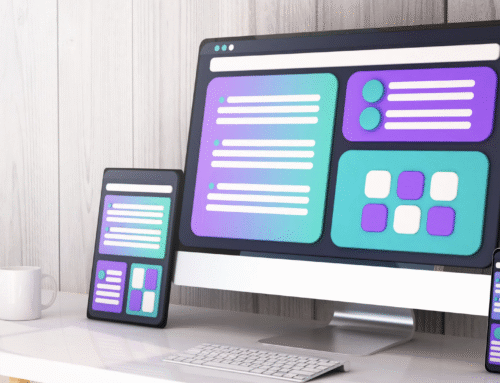Salesforce is software setup as a tool for customer relationship management (CRM) to provide the best overall user experience. The company is helping create close 3.3 million new jobs by 2022.
Recently the company I work for full-time switched over from NetSuite to Salesforce during a global expansion. This change created opportunities that I found to be important to a vast amount of tech workers. When I started my journey to obtain certification with Salesforce, the amount of available options was exciting and complex. In order to simplify the process I decided to create a series of articles to help myself, as well as others understand the software and the different types of certification.
Depending on your skill set, you might have ambitions to start a track in administration, marketing, data architecture, developer, and consulting. Review the different tracks via their main website.
The following article will focus on the administration track. I’ll be setting up learning materials to help myself perform well on the certification test. These tests do cost money each time you make an attempt, so it is important to have a solid understanding of the software before making the investment.
Salesforce Trailhead is an excellent resource to begin online training. There are several tracks and courses to start reviewing regardless your level of interest. The platform is free to use and provides resources to use at your own pace.
Some users might excel with online learning, and others might work better with printed materials. The Salesforce Help site offers PDFs to print off. I’ll be using a mixture of online and physical learning. If needed, Salesforce does provide instructor-led training at a cost. The following outline is a good start, but having 6 months of first hand experience is also important.
Schedule to take practice exams for Salesforce Administration to develop your skills.
The administration certification is broken down into 12 sections that I will cover in this article. Note, the structure and layout that I am using is based for the time frame I am writing this article, which is late 2019/early 2020. This may change over time. The percentages next to the titles is how the sections are weighted on the administration exam.
Organizational Setup – 3%
Describe the information found in the company information (for example, fiscal year, business hours, currency management, default settings).
Distinguish between the various UI features that an administrator controls, including the implications (for example, UI settings, search settings, list views, homepage layouts).
User Setup – 7%
Identify the steps to set up and/or maintain a user (for example, assign licenses, reset passwords, and resolve locked user accounts).
Understand the implications of activating, deactivating, or freezing a user.
Security and Access – 13%
Explain the various organization security controls (for example, passwords, IP restrictions, identity confirmation, network settings).
Given a user request scenario, apply the appropriate security controls based on the features and capabilities of the Salesforce sharing model (for example, organization-wide defaults, roles and the role hierarchy, manual sharing, sharing rules, and public groups).
Given a scenario, determine the appropriate use of a custom profile or permission set using the various profile settings and permissions.
Describe how folders can be used to organize and secure communication templates, dashboards, and reports.
Standard and Custom Objects – 14%
Describe the standard object architecture and relationship model.
Explain how to create, delete, and customize fields and page layouts on standard and custom objects, and understand the implications of deleting fields.
Given a scenario, determine how to create and assign page layouts, record types, and business processes for custom and standard objects.
Sales and Marketing Applications – 14%
Given a scenario, identify the capabilities and implications of the sales process.
Given a scenario, identify the appropriate sales productivity features using opportunity tools, and know when products and Price Books should be used.
Describe the capabilities of lead automation tools and campaign management.
Describe the capability of Salesforce Content.
Service and Support Applications – 13%
Describe the capabilities of case management (for example, case processes, case settings, and case comments).
Given a scenario, identify how to automate case management (for example, case assignment, auto-response, escalation, web-to-case, email-to-case, case teams).
Describe the capabilities of Salesforce Knowledge.
Describe the capabilities of the Community application (for example, Ideas and Answers).
Activity Management and Collaboration – 3%
Describe the capabilities of activity management (for example, manage tasks, events, public calendars, multi-day events.
Describe the features of Chatter (for example, feed, groups, following, security).
Data Management – 10%
Describe the considerations when importing, updating, transferring, and mass deleting data (for example, CSV files, data quality, field mapping, record IDs, external IDs, duplicate records).
Given a scenario, identify tools and use cases for managing data (for example, dataloader, data import wizard).
Describe the capabilities and implications of data validation tools.
Describe the different ways to backup data (for example, data export service, exports, dataloader).
Analytics, Reports, and Dashboards – 10%
Describe the options available when creating or customizing a report (for example, report type, report format, fields, summarizing data, filtering data, charting, scheduling, and conditional highlighting).
Describe the impact of the sharing model on reports.
Describe the options available when creating and modifying dashboards (for example, dashboard components, data sources, chart types, scheduling, and running user).
Describe the capabilities of custom report types.
Watch the following series of YouTube videos by Salesforce to build a better understanding.
Workflow, Process Automation – 8%
Given a scenario, identify the appropriate automation solution based on the capabilities of workflow/process.
Describe capabilities and use cases for the approval process.
Desktop and Mobile Administration – 3%
Describe the capabilities of the Salesforce Mobile App.
Describe the installation and synchronization options of Salesforce Lightning for Outlook.
AppExchange – 2%
Identify use cases for AppExchange applications.




